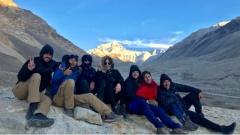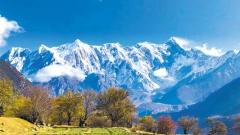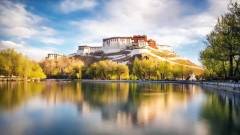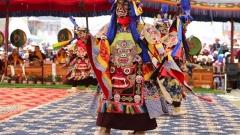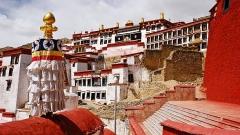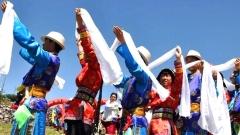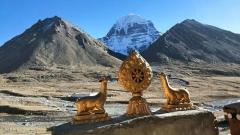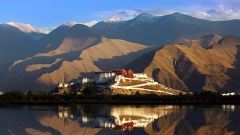Lhasa is not only Tibet’s cultural and political center—it is also its spiritual heart. From morning to night, pilgrims walk clockwise around sacred paths, spinning prayer wheels and chanting mantras. Most visitors know Barkhor Kora, but few realize that Lhasa has three major pilgrimage circuits: the Inner Kora, the Middle Kora, and the Great Outer Kora. Each ring reflects centuries of devotion and remains central to Lhasa’s living Buddhist traditions.
What Is Kora and Why It Matters in Tibetan Buddhism?
In Tibetan Buddhism, a kora means walking clockwise around a sacred site—whether a temple, monastery, stupa, holy mountain, or entire city.
Completing a kora is believed to:
-
accumulate merit
-
purify negative karma
-
deepen devotion
-
bring inner peace
For many Tibetans, the spiritual practice is woven into daily life. Some complete a short kora during their morning routine, while others walk longer circuits during festivals or special occasions such as Saga Dawa, the most important Buddhist holiday in Tibet.
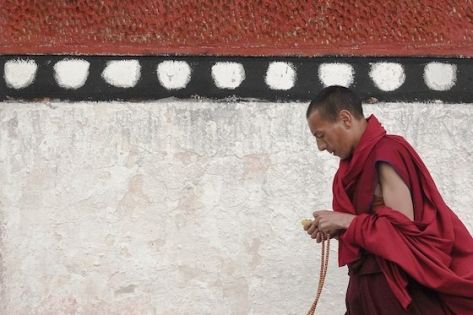
1. The First Ring: Barkhor Kora — The Heart of Lhasa
Although not formally considered one of the three “outer” rings, Barkhor Kora serves as the core sacred circle around Jokhang Temple, the holiest temple in Tibet.
Distance: 1 km
Duration: 15–25 minutes
What You Experience:
-
Pilgrims prostrating themselves fully on the ground
-
Lines of prayer wheels and incense burners
-
Traditional Tibetan shops selling butter lamps, rosaries, and ritual items
-
The constant murmuring of “Om Mani Padme Hum”
This kora is the spiritual heartbeat of Lhasa, where religious devotion and local life blend seamlessly.
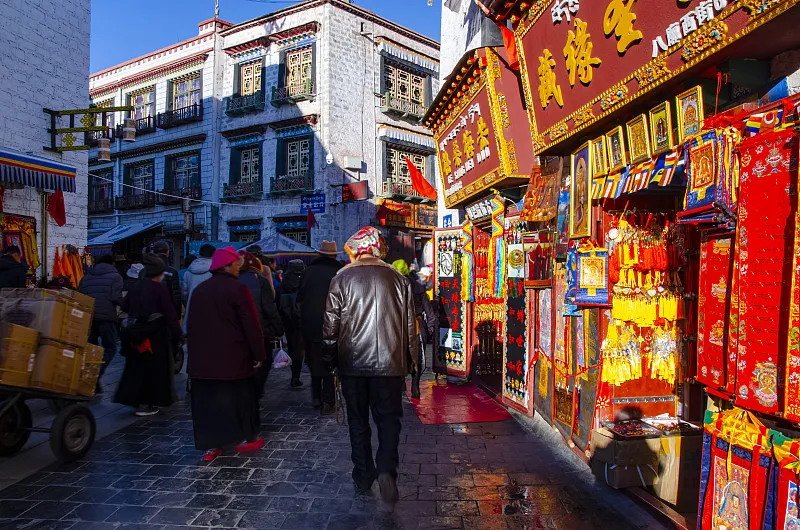
Barkhor Street
2. The Second Ring: Lingkor Kora — Lhasa’s Middle Circle
The second ring, known as Lingkor, is a larger circumambulation path that once surrounded the old city of Lhasa. In ancient times, everything inside Lingkor was considered sacred territory.
Distance: 8–12 km (varies slightly by path)
Duration: 2–3 hours
Key Highlights Along the Lingkor Route
-
Chagpori Hill and its prayer-flag viewpoint
-
Meru Nyingpa Monastery, one of Lhasa’s oldest temples
-
Shrines dedicated to protector deities
-
Old city alleys with traditional Tibetan homes
-
Quiet spots where locals stop to offer incense or chant
During grand festivals like Saga Dawa, thousands of pilgrims join this kora, creating one of the most unforgettable spiritual scenes in Tibet.
3. The Third Ring: Nangkhor & Outer Kora — The Great Pilgrimage Circuit Around Lhasa
The longest and most sacred of Lhasa’s pilgrimage paths is the Great Outer Kora, which traditionally circles around the mountains, temples, and holy sites surrounding the entire city.
Distance: 25–40 km depending on the chosen route
Duration: 6–9 hours on foot (some complete it over two days)
This great kora is considered especially powerful for accumulating merit. Many Tibetans walk it during important religious dates or in honor of significant life events.
Landmarks on the Great Outer Kora
The route varies, but it often includes:
1. Sera Monastery
One of Tibet’s “Three Great Monasteries,” famous for its monk debating courtyard. Pilgrims stop here to offer butter lamps.
2. Drepung Monastery
Once one of the world’s largest monasteries, home to the Dalai Lamas before the Potala Palace.
3. Chakpori Hill and the Potala Viewpoint
A classic spot overlooking the Potala Palace, filled with prayer flags fluttering over the city.
4. Outskirts Villages
Traditional Tibetan neighborhoods, small family shrines, and nomadic tents offering sweet tea to pilgrims.
5. Hermit Caves and Mediation Sites
Some caves outside Lhasa have been used by monks and yogis for centuries.
Completing this kora is seen as an act of deep devotion and spiritual renewal.
Why Pilgrims Walk the Three Rings
The three-ring kora system symbolizes a progression in spiritual practice:
-
Inner ring (Barkhor): daily devotion
-
Middle ring (Lingkor): annual or festival-based practice
-
Great ring (Outer Kora): major spiritual commitment
Together, they reflect a complete engagement with Lhasa’s sacred geography.
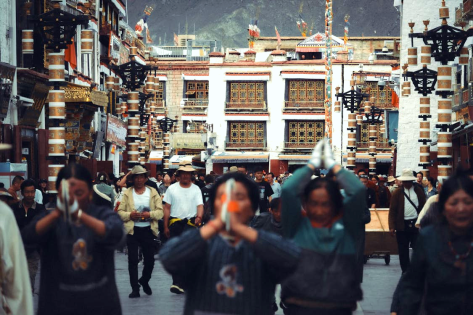
Pilgrims
Tips for Travelers Interested in Walking the Kora
Walking any of the Lhasa koras is a meaningful cultural experience. Here’s how to do it respectfully:
-
Walk clockwise—this is essential.
-
Do not photograph prostrating pilgrims without permission.
-
Dress modestly, especially around temples.
-
Avoid blocking the path, which is sacred to locals.
-
Join early morning pilgrim flows for the most authentic experience.
-
Stay hydrated, especially on the longer outer circuits.
You don’t need to be Buddhist to walk the kora—many travelers find it peaceful, meditative, and spiritually grounding.
What the Three Kora Rings Reveal About Lhasa
The pilgrimage paths are more than routes—they are living expressions of Tibetan identity.
They reveal:
-
Lhasa’s ancient urban layout
-
how spiritual life shapes everyday routines
-
the deep connection between sacred spaces and community life
-
how devotion is carried out in movement, sound, and repetition
Walking the koras lets travelers experience Lhasa not only as a destination but as a living, breathing spiritual world.
Conclusion
From the bustling Barkhor streets to the tranquil outer mountains, Lhasa’s three kora rings offer a window into the soul of Tibetan Buddhism. Whether you walk a short section or complete all three circuits, the journey brings insight into Tibetan devotion, culture, and centuries-old traditions that still thrive today.




